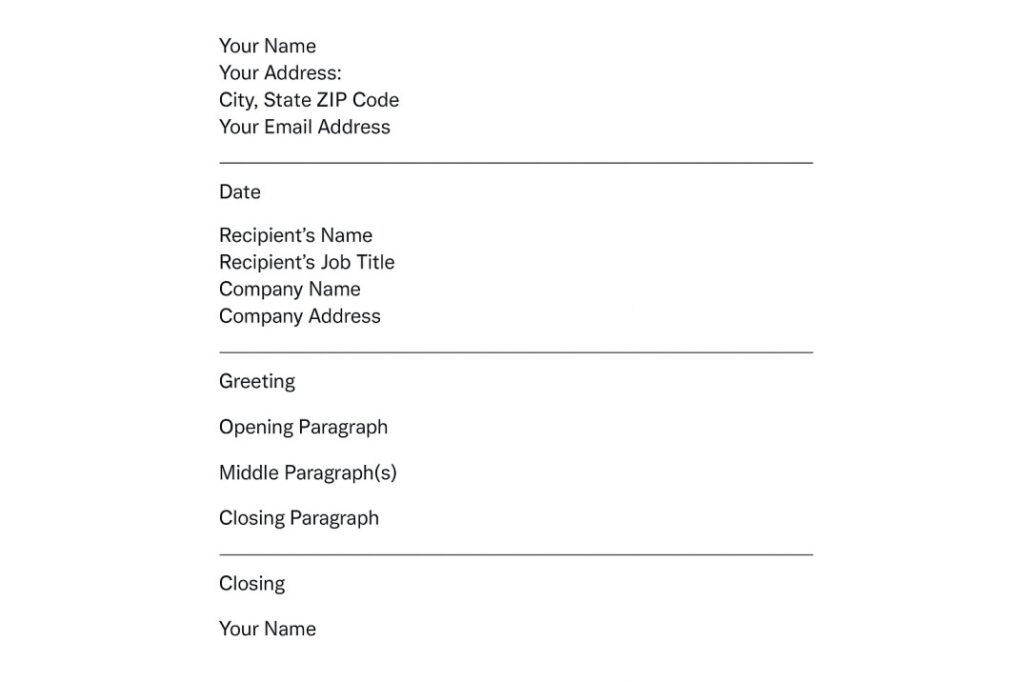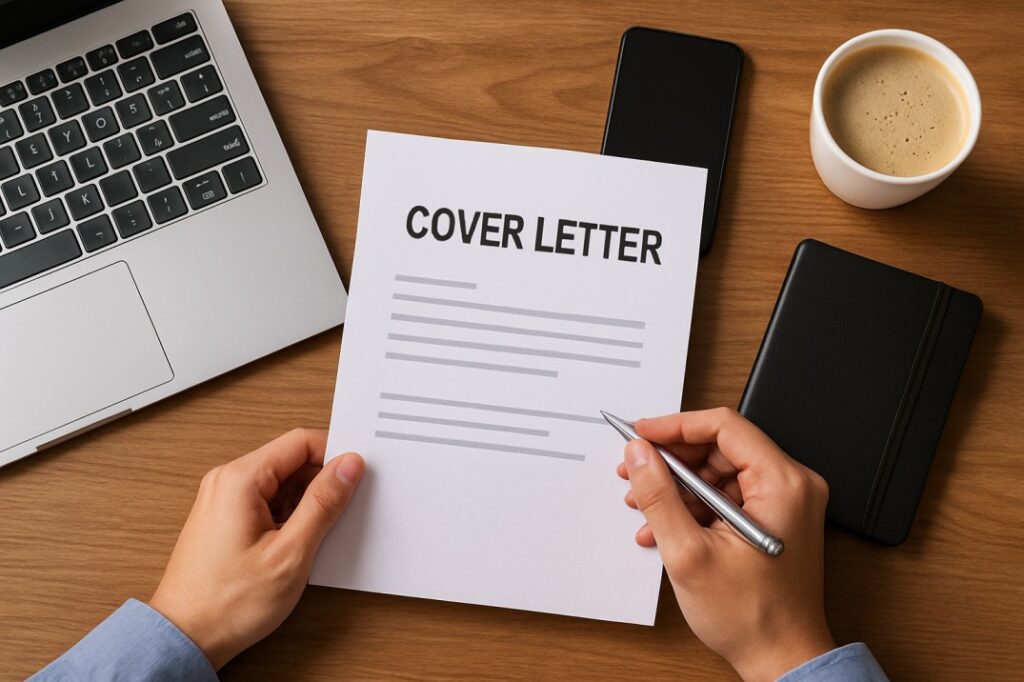Introduction
Writing a cover letter can feel intimidating, especially when you don’t have prior job experience. Many first-time job seekers ask themselves: How do I prove my worth to an employer if I’ve never had a job before? The truth is, employers don’t just look for work history—they also value skills, enthusiasm, and potential. With the right approach, you can create a compelling cover letter that grabs attention, even without formal experience.
This article will guide you step by step on how to write a cover letter with no experience. You’ll learn strategies, see examples, and get practical tips to help you stand out.
Why a Cover Letter Still Matters
A cover letter may feel old-fashioned in today’s digital hiring world, but it still plays a critical role in setting you apart. It gives you the chance to explain who you are, why you’re applying, and how your skills match the role. Even with no job experience, it can highlight enthusiasm, transferable skills, and motivation that a resume alone can’t convey.
Reasons a cover letter matters:
- It highlights skills that don’t fit on your resume.
- It allows you to explain your motivation and enthusiasm.
- It gives you a chance to stand out from applicants who only send resumes.
- It demonstrates your communication skills.
Real-Life Example: A college student applying for a marketing internship shared how they had no job experience but wrote about their social media projects in university. That cover letter helped them land the internship.
Step 1: Understand the Job Description
Before you can start writing your cover letter, it’s essential to understand what the employer is looking for. The job description is like a cheat sheet—it lists the qualities, skills, and responsibilities expected from the ideal candidate. By reading it carefully, you can tailor your cover letter to show that you already have what they value most, even without work experience.
Tips for analyzing a job description:
- Highlight keywords (e.g., teamwork, communication, problem-solving).
- Match your own experiences (school, volunteering, hobbies) with these keywords.
- Identify transferable skills you can emphasize.
Step 2: Format Your Cover Letter

The format of your cover letter is just as important as the content. A clean, professional design shows that you respect the hiring process and pay attention to detail. Even if you don’t have formal work experience, a well-structured letter can make you appear professional and serious about the role. Employers are more likely to read a letter that looks neat and easy to follow.
Cover Letter Format:
- Header: Your name, contact info, date, and employer details.
- Greeting: Whenever possible, address the hiring manager directly by name.
- Introduction: Explain why you’re applying.
- Body: Highlight skills, achievements, and enthusiasm.
- Closing: Thank the reader and include a call to action.
Example Layout:
| Section | Content Example |
| Header | Your Name, Email, Phone, Date, Employer Name |
| Greeting | Dear [Hiring Manager’s Name], |
| Introduction | I’m excited to apply for [Job Title] at [Company]. |
| Body | Highlight transferable skills, achievements, and motivation. |
| Closing | Thank you for your time. I look forward to the opportunity. |
Step 3: Start with a Strong Opening
Your opening paragraph is the first thing a hiring manager will read, so it needs to grab attention immediately. Instead of starting with the typical “I am applying for this job,” focus on enthusiasm and connection to the role. Demonstrate to the employer that you’re truly enthusiastic about the role, even without formal job experience. A strong start makes them want to keep reading.
Examples:
- “I’m excited to apply for the Customer Service Assistant role at XYZ Company because of my passion for helping people and problem-solving.”
- “As a recent graduate with strong communication skills, I am eager to bring my enthusiasm and dedication to your team.”
Step 4: Highlight Transferable Skills
When you don’t have professional work history, transferable skills become your best friend. These are skills you’ve gained through school, projects, volunteering, or even personal hobbies that can apply directly to the job. Employers often value problem-solving, teamwork, and adaptability just as much as prior experience, so showing how you already have these skills can make your application stand out.
Examples of transferable skills:
- Communication (presentations, writing, group projects).
- Teamwork (sports, group assignments).
- Leadership (leading a student club or project).
- Problem-solving (research projects, event planning).
- Technical skills (Microsoft Office, coding, design software).
Comparison Chart: Transferable Skills vs. Job Skills
| Transferable Skill | Related Job Skill |
| Writing essays | Professional communication |
| Group projects | Team collaboration |
| Student leadership | Management potential |
| Class presentations | Customer interaction |
Step 5: Use Real Examples
Employers aren’t only interested in reading your skills—they want to see real evidence of them. That’s why including real examples is so powerful. Even if you’ve never held a job, you can use experiences from school, volunteering, clubs, or personal projects. These examples make your skills believable and show that you can apply them in practical ways, which reassures hiring managers.
Examples:
- Organizing a school event shows leadership and planning.
- Helping a family business demonstrates responsibility.
- Volunteering at a charity highlights commitment and teamwork.
Case Study: A student without job experience got hired as an office assistant because they highlighted how they managed the scheduling for their school’s debate club.
Step 6: Show Enthusiasm and Motivation
Employers know that skills can be taught, but motivation and attitude are harder to train. That’s why enthusiasm is often more valuable than experience. A hiring manager is more likely to choose someone who is genuinely excited about the role over someone with experience but little interest. Show why you want the job, why you admire the company, and how it connects to your goals.
Tips to show motivation:
- Mention why you admire the company.
- Describe how the position connects with your long-term career ambitions.
- Show curiosity and willingness to grow.
Step 7: Write a Strong Closing
Your closing paragraph is your last chance to make a strong impression. A great closing doesn’t just thank the employer—it also shows confidence and invites the next step, which is an interview. Even if you have no experience, a professional and enthusiastic closing line can leave the hiring manager with a positive impression of your application.
Example Closings:
- “Thank you for considering my application. I would welcome the chance to discuss how my skills can contribute to your team.”
- “I am eager to bring my enthusiasm and commitment to this role and look forward to an interview opportunity.”
Sample Cover Letter with No Experience
Here’s a simple example of how to apply everything we’ve discussed.
Your Name
Your Address | Email | Phone
Date
Hiring Manager’s Name
Company Name
Company Address
Dear [Hiring Manager’s Name],
I’m enthusiastic about the opportunity to join [Company] as a [Job Title]. Although I do not have formal work experience, I have developed strong skills in communication, teamwork, and organization through my academic projects and volunteer activities.
For example, I led my school’s cultural event, managing a team of ten students to plan and execute the program successfully. This experience taught me leadership, responsibility, and problem-solving under pressure. Additionally, my ability to adapt quickly to new challenges makes me eager to contribute to your company’s success.
I admire [Company’s] dedication to [specific value or achievement] and am motivated to bring my enthusiasm and commitment to your team. I believe my transferable skills and eagerness to learn will make me a valuable addition.
Thank you for considering my application. I would be grateful for the opportunity to discuss how my skills can benefit your team. I look forward to an interview opportunity.
Sincerely,
[Your Name]
Pros & Cons of Writing a Cover Letter with No Experience
| Pros | Cons |
| Shows enthusiasm and effort | Can highlight lack of work history |
| Focuses on transferable skills | Requires creativity to stand out |
| Builds confidence in writing | Needs personalization for each job |
Practical Tips for Success
- Keep your cover letter to one page.
- Customize for each application.
- Avoid generic phrases like “hardworking” without proof.
- Use active verbs (organized, led, created, improved).
- Proofread carefully for errors.
Conclusion
Not having work experience shouldn’t stop you from applying for jobs. A strong cover letter highlights your transferable skills, passion, and growth potential. By analyzing the job description, highlighting real-life examples, and showing genuine motivation, you can craft a strong application that gets you noticed.
So, the next time you wonder how to write a cover letter with no experience, remember: focus on your strengths, tailor your message, and let your passion shine through. Employers look for potential and enthusiasm, not just work history.
Disclaimer: This article is for informational purposes only. Outcomes may vary based on individual effort, job market conditions, and employer requirements.
FAQs: How to Write a Cover Letter with No Experience
Yes, many employers hire beginners who show enthusiasm, skills, and willingness to learn. Your cover letter helps demonstrate that.
You don’t need to say it directly. Instead, focus on your strengths, skills, and motivation.
Ideally, one page with 3–4 short paragraphs.
Yes, tailoring your cover letter for each job increases your chances of getting noticed.
That’s okay. Highlight projects, group work, and relevant coursework as proof of your abilities.


